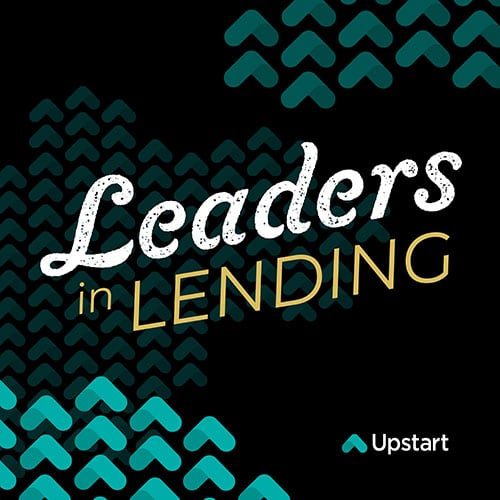Leaders in Lending | Ep. 84
Policy and Practice to Expand Greater Access to Credit
Nicole Elam, President and CEO National Bankers Association and Nat Hoopes, VP, Head of Public Policy and Regulatory Affairs at Upstart, discuss how the MoreThanFair initiative enables more inclusive access to credit.



GUEST SPEAKER
Nicole Elam
Nicole A. Elam, Esq. is President and CEO of the National Bankers Association ("NBA"), the premier trade association and voice for the nation’s minority financial institutions. She is the youngest President and CEO since the NBA’s founding in 1927. Nicole joined the NBA in May 2021 from JPMorgan Chase & Co. where she was vice president and government relations manager developing public policy positions and advocacy strategies in Washington, DC. In this role, she also managed national engagement strategies and led efforts on the firm’s commitment to invest $30 billion over five years to advance racial equity and drive inclusive economic growth. Nicole received a Juris Doctor degree cum laude from the Howard University School of Law (where she was solicitations editor of the law review), and a Bachelor of Arts degree from DePauw University.

GUEST SPEAKER
Nat Hoopes

ABOUT
NBA
Founded in 1927 as the Negro Bankers Association, today, the National Bankers Association still works to support and strengthen America's minority-owned and -operated banks. Through unmatched networking and federal advocacy, the NBA provides its members with opportunities to have a voice in national conversations about closing the racial wealth gap. Their members include Black, Hispanic, Asian, Pacific Islander, Native American and women-owned and -operated banks across the country, all working to help low- and moderate income communities who are underserved by traditional banks and financial service providers.
Key Topics Discussed
-
Why automated lending and online banking are particularly challenging for Minority Deposit Institutions (MDIs)
-
How policy changes can encourage fair lending and push for reforms to include more data to determine creditworthy borrowers
- How fintech partnerships can enable growth for MDIs


“When it comes to inclusive lending on access to credit, we have to move faster as a society. And the only way to do that is to put everybody at the table.” - Nat Hoopes

“Before you even get to lending, [MDIs] need to have a great experience and great engagement. Technology is central to all of that.” — Nicole Elam
EPISODE RECAP & SUMMARY
Technology is transforming the banking landscape, but it is cost-prohibitive for smaller institutions and can unfortunately leave out borrowers who need access to capital the most. Recognizing that access to credit is access to opportunity, the movement for inclusive credit is growing thanks to the MoreThanFair initiative, which proves technology and data science can make lending more inclusive, transparent and fair.
Our guests today have been at the forefront of the movement for more inclusive credit. Nicole Elam, President and CEO of the National Bankers Association, and Nat Hoopes, VP, Head of Public Policy and Regulatory Affairs at Upstart, are both involved in the MoreThanFair initiative. They discuss how leveraging technology partnerships to expand access to capital and credit is essential to opening up opportunities for lower income and minority communities.
Why automated lending and online banking are particularly challenging for Minority Deposit Institutions (MDIs)
Many MDIs are getting left behind when it comes to the technology transformation happening within the banking world right now. The unfortunate situation comes down to three reasons:
- Cost prohibitive: No available funds to take on the technology
- No internal capacity: Unable to manage the technology
- Insufficient core integration: Outdated legacy cores that cannot handle new tools
Despite the setbacks, MDIs still have an opportunity to compete with the larger institutions to supply the much needed capital to their communities. This is made possible through partnerships, rather than directly competing.
“They're not going to be able to build it, or buy it fast enough,” Elam explains. “And so partnering with fintechs, like Upstart, to do some of the things that they're unable to do is really the only way that they're going to be able to compete.”
These partnerships have allowed them to double down on some of the most popular challenge areas, including peer-to-peer, automated lending and online on-boarding.
How policy changes can encourage fair lending and push reforms to include more data to determine creditworthy borrowers
While the fintech partnerships have helped MDIs keep up with larger institutions, there’s other ways the community can help keep everyone involved with the newest innovations — specifically with two policy changes:
Serving the needs of every community: The Community Reinvestment Act rewards banks that have products that are responsive to low and moderate-income communities.
Supervision: Constant oversight is needed to evaluate traditional systems and look for ways to improve inclusive credit access.
Making a difference with MoreThanFair
The NBA and Upstart both joined the MoreThanFair initiative to address some specific ways communities have been left out, including denial based on credit score alone:
“Four fifths of black borrowers have a credit score under 700,” Nat explains. “When most banks are cutting off at 700, they're just writing huge potential minority communities out of their applicant pool. But the people that can most benefit from these products often fall in that spectrum, where they might not even be given a shot.”
A borrower's true creditworthiness requires more than three numbers. Using AI and machine learning technology, these borrowers have the opportunity to access the funds they need.
How fintech partnerships can enable growth
The partnership model enables lenders, especially MDIs, to implement the much-needed infrastructure to increase the accuracy of their credit decisioning while improving the customer experience.
Elam and Hoopes are optimistic for the future of MDIs as long as stakeholders such as regulators, lenders and technology providers continue to engage in conversation — as technology continues to grow, so must the support for these deserving communities.





